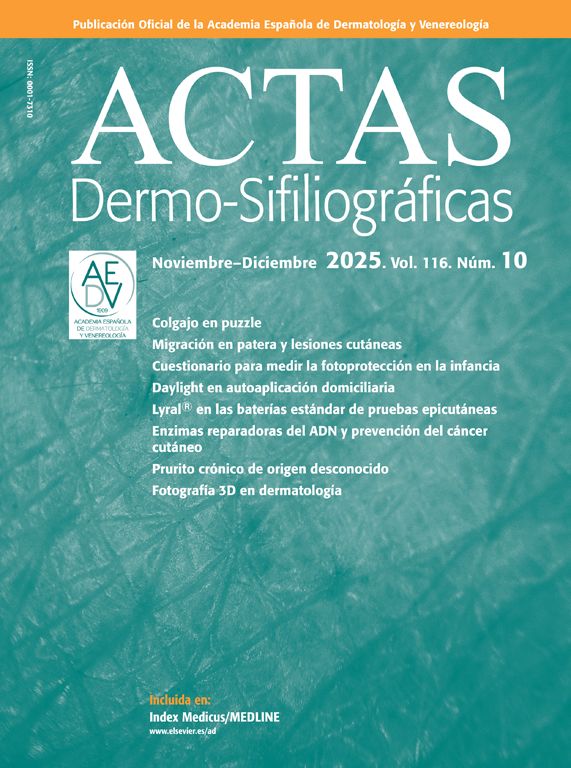Raynaud's phenomenon (RP) is a relatively common vasospastic disorder, whose primary and secondary forms are associated with a negative impact on quality of life.1 The absence of quality studies evaluating the efficacy of different treatments can pose a challenge in the management of secondary forms, which may be refractory to various therapeutic lines.2 The Journal of the American Academy of Dermatology has recently published a review on this subject.3
Lifestyle changes aim to avoid triggers and exacerbating factors and are indicated in both forms. They include avoiding cold, caffeine, tobacco, and vasoconstrictor drug, as well as performing centripetal force maneuvers and relaxation techniques.3
Primary RP—more common, non-progressive, and typical of young patients—usually responds to these measures, reserving pharmacological treatments for refractory cases. Among these, dihydropyridine calcium channel blockers (amlodipine 2-5-10mg/24h or sustained-release nifedipine 30–90mg/24h) are considered as the first choice, being less cardioselective and generally well tolerated, although they can cause lower extremity edema.3 Topical nitrates are considered second-line agents, recommending the use of 1% nitroglycerin. When the above-mentioned fail, phosphodiesterase-5 inhibitors can be used, specifically tadalafil 20mg/24h or sildenafil 20mg/8h.3l-Arginine is an amino acid precursor of nitric oxide with a good safety profile, which could be used in patients who do not tolerate vasodilators due to hypotension, although its evidence comes from studies with patients with secondary RP.4 An initial dose of 1–2g/24h is recommended, which can be up titrated to 8–9g/24h or adding citrulline (a precursor of l-arginine with better oral absorption).3
Secondary RP occurs in the context of another systemic disease, usually autoimmune. It usually produces more painful episodes and can lead to irreversible tissue destruction.1 Therefore, in these cases, early pharmacological treatment is recommended.3
Pharmacological treatments include calcium channel blockers, topical nitrates, phosphodiesterase-5 inhibitors, other vasodilators such as losartan (50mg/24h) or prazosin, endothelin receptor inhibitors such as bosentan (62.5mg/12h for the first 4 weeks, with subsequent up titration to 125mg/12h), the drug of choice in patients with pulmonary arterial hypertension and in patients with systemic sclerosis and a past medical history of digital ulcers, or IV prostanoids such as iloprost or alprostadil. In patients who do not tolerate this vasoactive treatment due to hypotension or other side effects, the administration of l-arginine or ASA—the only recommended antiplatelet agent—or pentoxifylline for its vasodilator action and good tolerance can be considered. Anticoagulants are only recommended if the patient has an associated coagulation disorder.3 Interdigital botulinum toxin infiltration helps improve symptoms and heal digital ulcers.3
Other therapeutic options, such as statins, serotonin reuptake inhibitors, or N-acetylcysteine could be used as adjuvants or in refractory cases, especially in patients with hypotension, yet the scientific evidence on their usefulness in RP is limited.3
Finally, surgical treatment by thoracoscopic sympathectomy is recommended to be considered in certain patients with very refractory RP or with a very high risk of digital necrosis.3



